“Has ‘Ringu’ (1998) changed both Japanese and American/western cinema and if so, how?” by Sara Clyndes: Part One
Introduction
Ringu (1998) is Japan’s highest grossing horror film to date. Its success started off a horror boom in the east that still continues today. After a cinematic slump in Japan, Ringu (1998) raised the profile of Japanese film for the first time since the 1960’s, but did it change eastern cinema and how did it impact on the west? To answer these questions I will be looking at the origin of Ringu (1998) and what elements make it so successful, this will help to understand both its domestic and international impact. Moving on from its origins, we will look at Ringu’s (1998) triumph in Japan and how it sparked a boom of films subcategorised as ‘J-horror’. We will then see how it fared across the water and what (if any) influence it had in the west. I will be looking at America in particular as this is where all the subsequent Japanese remakes emerged from.
Chapter One – background and aesthetics
In order to start to understand how Ringu (1998) impacted on both Japanese and American cinema it is important to discuss its origins. As a very significant film in the Horror genre I feel it is necessary to highlight Ringu’s (1998) influences and inspiration in order to establish whether it is a ‘stand alone’ film in its own right or whether its borrowings from other texts and films mean that it owes significant debt for its success.
Ringu (1998) was released in Japanese theatres on the 31st of January 1998 and was directed by Hideo Nakata. Nakata’s break into the film industry actually came via erotic films (known as Pinku in Japan) most of which were being produced by the film studios ‘Nikkatsu’ which announced bankruptcy and subsequently closed in 1993. Nakata worked as an assistant director on many Pinku films but following the close of ‘Nikkatsu’ he moved to England for a year in 1993. Whilst in England Nakata started making a documentary on the U.S. born filmmaker Joseph Losey (1909-84). The project however would take several years to complete due to financing. Nakata returned to Japan in 1994 and took on several directing jobs in order to finance his documentary and this is where he made his first feature film – Joyu-rei (Ghost Actress 1996). Tom Mes (2005: 256) states, ‘Nakata has made no secret of his disinterest in Horror. Ghost Actress was written purely as a commercial exercise in order to gain enough money to complete his documentary on Losey.’ However, even though Nakata showed a certain amount of disdain for the genre, Ghost Actress (1996) was the platform for Ringu (1998), the highest grossing horror film in Japan to date making just over $49,000,000 U.S. dollars.
Although it wasn’t a commercial success, through directing Ghost Actress (1996) Hideo Nakata came into contact with Takenori Sento who would later be one of the producers for Ringu (1998). Ghost Actress (1996) also caught the attention of Koji Suzuki, the author of the popular novel Ringu (1991). Koji selected Hideo as a candidate for the feature film version of his novel, Nakata was chosen to direct and so began the birth of the film ‘Ringu’ (1998).
Ringu (1998) tells the story of journalist and single mother Reiko Asakawa (Nanako Matsushima) investigating the urban legend of a ‘cursed video’. One which kills you seven days after you initially watch it. Although, Reiko herself is not fazed by the idea of such a tape, a remark made by a child she was talking to suggested that perhaps there was more to this ‘urban legend’. Reiko discovers that her niece Tomoko (Yuko Takeuchi) who had recently and very suddenly died spent the night not long before her death in a cabin with three of her friends where they supposedly found an unmarked tape. Reiko investigates and discovers the three friends had also died the same night as Tomoko, one week after staying at the cabin.
Reiko’s journalistic curiosity takes over and soon she gets hold of the infamous tape. After viewing the tape her casual scepticism turns to genuine concern as something about the video is evidently unnerving although it isn’t clear just how malevolent it truly is. The video runs for less than a minute and shows very grainy black and white images which include jumbled newsprint and a close up of someone’s eye. After the tape finishes the phone immediately rings but there is no one speaking on the line, just metallic screeching.
Reiko releases that this may be quite a serious situation and she calls her ex-husband Ryuji (Hiroyuki Sanada) who is father to her child Yoichi (Rikiya Otaka) for help. He is sceptical of the tape and the phone doesn’t ring when he finishes watching it. However, Reiko’s son Yoichi manages to get hold of the tape and watches it. Reiko expresses genuine worry for her son and Ryuji agrees to go with her to Oshima, the birthplace of the woman seen on the video. There they discover the last of her relatives and the tragic story that lies behind the curse is revealed. Shizuko Yamamura (the woman on the tape) accurately predicted the eruption of a volcano and became something of a media celebrity which in turn attracted the attention of a Tokyo Professor Dr. Ikuma who presents Shizuko Yamamura in front of a group of journalists with the intention of proving the validity of his research into psychic phenomena. The presentation does not go as planned and Shizuko Yamamura is labelled a fraud. During the demonstration several reporters died, local townspeople and the media blamed Shizuko’s daughter Sadako who possessed similar psychic powers. Because of torment by her family and the media, Shizuko throws herself into the volcano which leaves her daughter in the care of Dr. Ikuma. Ikuma’s family life and career had been destroyed; he vents his anger on Sadako by killing her and dumping her body in a well. Eventually the land became a holiday resort and a cabin was built over the well where Sadako was left. The video tape which mysteriously appeared in the cabin is described by Jim Harper (2008:116) as ‘the physical manifestation of Sadako’s post-mortem fury’.
Reiko and Ryuji rush back to the mainland with the answers they need and head to the holiday resort. They uncover the well where Sadako’s remains lie with just a few minutes left to spare before the seven days are up. Reiko’s deadline passes and all seems well, Sadako is given proper burial rites and there is a suggestion that Reiko and Ryuji have a future together. However, in the last terrifying and well executed scene we see Sadako emerge from Ryuji’s television set and in a manner comparable to an insect, crawl towards him where he meets his inevitable fate. The explanation behind his death and Reiko’s survival is simple but easily missed. Reiko created a copy of the tape to show to Ryuji, thus passing the curse onto him, realising this Reiko gets Yoichi to make a copy too which they pass onto his grandfather on the promise that he too will make a copy and pass it on, meaning that Sadako’s curse is unstoppable and will forever continually spread like a virus.
With the background to the film established it is important to look at its influences and directing/plot devices to help start to establish if Ringu (1998) has made a significant contribution to the rise of Japanese Horror in the nineties and its impact on western cinema (particularly the U.S.). Has this film played a significant role in the horror genre, or is it simply a piece which incorporates so much influence and similarity to other films that its success was simply a stroke of luck?
Ghost Actress (1996) being Nakata’s first feature film and one which fits into the horror genre makes it a useful film to compare and contrast with Ringu (1998) to see what (if any) plot devices and influences Nakata lifted from it. Tom Mes (2005:257) cites, ‘Ghost Actress showcases all the stylistic devices that the director would use in his later film, The Ring’. This is an agreeable statement. Ghost Actress (1996) demonstrates deliberate steadily slow pacing in order to build up tension and create a sinister atmosphere, something which is significantly present in Ringu (1998). Very little is given away in plot and explanation and the first half of Ringu (it can even appear to drag at times) but it appropriately builds up tension as the audience know something is going to happen – ‘by providing the date before Reiko has actually seen the tape (a trick also used in The Amityville Horror (1979)), Nakata warns the audience that something will be happening soon, so we’re one step ahead of the heroine’ writes Jim Harper (2008:115). Although it has been established that there are pacing similarities in Ghost Actress (1996) and Ringu (1998) these are arguably an important staple of any horror film that does not rely on factors such as gore but instead build up tension and atmosphere through steady pacing. Also, Nakata’s horror feature film Honogurai Mizu No Soko Kara (Dark Water 2002) was incredibly slow therefore it can be viewed simply as one of the director’s traits.
Another similarity between Ghost Actress (1996) and Ringu (1998) is the obscurity of the apparitions. Sadako is only seen very briefly throughout Ringu (1998) and never quite in her full form – she is more hinted at than presented. Sadako can be seen in a few of the shots in the video tape and occasionally appearing as a ghostly apparition in windows. These infrequent viewings also ring true in Ghost Actress (1996), the ghost tormenting the film crew in the studio is either obscured by shadows or reflective surfaces. In the climax of both films the ghostly apparitions appear in their full and terrifying form with both films ending on the same pessimistic note, with no easy resolution in sight.
Folklore has long been a massive part of Japanese culture and for them it goes hand in hand with the supernatural and religion. Andy Richards (2010:15) writes:
There are significant ways in which contemporary eastern cultures demonstrate a more widespread and engrained acceptance of supernatural forces than their western counterparts. The roots of this lie in Asian religious traditions (Buddhism and Shinto, for example), whose animistic pantheistic and karmic beliefs contrast sharply with the more binary mortalities of the western Judeo-Christian tradition.
Shinto in particular is a religion wholly accepting of what westerners would consider ‘supernatural’. According to Shinto, millions of objects within nature are inhabited by spirit deities who depending on circumstance can be either friendly or aggressive. However, there are also concrete examples of spirits and the afterlife being commonplace in everyday life. A lot of Japanese homes contain a Buddhist household alter where spirits of the deceased are supposed to reside; regular offerings are made to these shrines. Through this acceptance of spirits as a genuine part of life eastern culture is filled with much more ghost stories than the west. From stories and literature featuring the spirits of Shinto and Buddhism the Yurei came into being (arguably the first appearance of a Yurei was in the story The Tale of Genji in the eleventh century). Yurei are explained by Andy Richards (2010:16), ‘Yurei come into being when people die violently through suicide or murder, or in the grip of passionate emotions, or if fitting burial rites have not been adequately performed.’ Yurei tend to wear white Shinto burial kimonos, their bodies hang limply and their long dark hair covers their faces sometimes with an eye peering. A subcategory of Yurei are Onryou also known as revenge-ghosts, their post-mortem fury drive them to kill those who have wronged them. They frequently appear in Kabuki theatre plays dating back to the 17th century and Noh theatre dating back to the 14th Century. Noh Theatre often had supernatural elements featuring (usually) masked performers. It was for higher society but when Kabuki theatre style started to appear in the 17th century it was less elitist and boasted an elaborate theatrical experience. Using devices such as trapdoors and hidden wires Kabuki was a theatre filmed with pre-film SFX. It did draw on some of the elements of Noh theatre and its stories were still of supernatural origin featuring ghosts (ghost stories are known as Kaidan in Japan) but it had much more of an impact on the Japanese horror films of 20th century. One of the frequent elements of Kabuki theatre were Onryou which brings us back to Ringu (1998) which features one of the most unsettling Onryou’s of Japanese horror – Sadako. Evidently drawing on inspiration from Kabuki theatre both Ghost Actress (1996) and Ringu (1998) present these revenge-driven ghosts with their distinguishing features of white dress, limp bodies and faces obscured by long dark hair.
However, influences in Ringu (1998) were not just drawn from eastern sources. There are hints throughout the film of western horror inspiration. It may be subtle but the evident impact of western horror takes place at some key points, meaning the influence drawn could render important parts of the film ‘westernised’.
Part of what makes the film so eerie is the soundtrack provided by Kenji Kawai and described as ‘creepily discordant’ by Andy Richards (2010:64) and ‘Nakata’s greatest asset’ by Jim Harper (2008:115). Although the composition of industrial crashes, screeching and poundings (which have been altered beyond recognition) contribute beautifully to the dark atmosphere of Ringu (1998) I disagree that it is Nakata’s greatest asset, its only part of what makes this film so chilling. The washed out colour scheme of greys and greens, the dark lighting and slow paced build up to Sadako’s final act all contribute brilliantly to the restrained and tense atmosphere. In terms of influence it is possible to see western inspiration within the soundtrack. Harper (2008115) cites ‘Its closest cousin would probably be Tobe Hooper and Wayne Bell’s clanging, discordant score for The Texas Chain Saw Massacre (1974)’. Kenji Kawai’s soundtrack is still very distinctive but the scores are definitely comparable.
There is also evidence of influence in Ringu (1998) from The Amityville Horror (1979) as both films run a parallel plot line (a number of western horrors feature this). Yoichi is being tormented by Sadako but Reiko is too preoccupied with finding the origins of the tape to realise. However, more so than The Amityville Horror (1979) there are cinematic nods to Tobe Hooper’s film Poltergeist (1982) this is due to the use of televisions within Ringu (1998). ‘During Tomoko’s funeral Yoichi is drawn upstairs by a fleeting vision of his cousin, only to be found staring at the television in a scene reminiscent of Tobe Hooper’s Poltergeist (1982)’ states Harper (2008:114). Whilst I support this statement I think Harper (2008) has overlooked the final scene in which Sadako emerges from the television, this seems to be another similarity between the two films, comparable to the poltergeist reaching out from the static in the television.
So, looking at the origin of Ringu (1998) it is clear that there are some influences drawn from other sources such as Nakata’s previous film Ghost Actress (1996), western horror films, supernatural Japanese tales and Kabuki theatre (this influence I feel is the strongest). However, I do not think these influences however strong or subtle render this film a cliché of the previous Japanese horrors, many of which include Yurei or Onryou (to name a few Sweet Home (1989), Kwaidan (1964) and The Discarnates (1988)) or social suggestions about the grip of technology on the modern world such as Tetsuo (1989). Hideo Nakata’s Ringu (1998) definitely stands apart from the rest of the horror genre partly due to revisions that Nakata and Hiroshi Takahashi made from the original novel. The first major change they made was changing the male protagonist to female. Andy Richards (2010) writes ‘it added a rich family dynamic by changing the sex of the main character from male to female’. I agree it was very interesting to see the dynamic of a mother being (unintentionally) distant from her child as maternally this isn’t ‘supposed’ to happen, it makes the audience root for the family to come together as well as their survival. Another element they changed was to have the virus entombed in the video tape a ‘supernatural’ entity rather than a literal smallpox virus as it was in the novel. This makes the idea of the tape scarier as with a genuine disease there is hope of curing it but something supernatural can be rendered unstoppable, it probably also helped appeal to Japanese audiences more as the uncanny is part of their everyday life and beliefs. Probably the most effective change to the novel is Sadako herself. Yurei have long had a place in Japanese horror cinema, the avenging spirit motif has been used many times but Sadako is different, not entirely in dress but in her character. Sadako’s Kabuki theatre inspired look was given to her by Nakata and Takahashi. The white draping dress with her long bedraggled black hair which obscures all of her face except for a decomposing and bloodshot eye make for unforgettable imagery that will haunt the viewer for some time. ‘There have been few more gripping images conjured up by turn-of-the-century fantasy cinema than that of the pallid-faced figure of Sadako,’ states Jasper Sharp (2005:260). What contributes to this frightening Onryou is the obscurity of her character until the very end of the film when she finally appears in full and terrifying form in a scene also conjured up by Nakata and Takahashi. However, it is not just Sadako’s imagery that makes her so frightening, it is her pure malevolence. Yurei and Onryou are defined as wronged (usually) women who die violently or unjustly. Whilst Sadako is murdered she is not an innocent party and it is suggested that she has indeed killed people. Therefore her character becomes quite unsympathetic and the addition of her videotape having to forever be passed on helps to prove how malicious she is. Eric White (2009:38) cites ‘The curse never could have been lifted by restoring Sadako symbolically to the human community by means of a proper burial, because she was not herself ‘human’ to begin with, and her ultimate motivation was never, therefore, humanly intelligible.’ Sadako is infact revealed in the film to be part human and part sea monster and therefore acts typically ‘inhuman’ with no compassion, only rage towards others.
So, Nakata has managed to separate Ringu (1998) from the rest of the horror pack by means of effective changes in the dynamics featured in the novel, slow paced directing to create tension and the terrifying revelation of his cinematic version of Sadako. Ringu (1998) is a film that has climbed above its predecessors of the ‘revenge-spirit’ horror genre by using subtlety in its filming with no gore and instead opting for a dark, atmospheric build. Tom Mes (2005:257) cites ‘Nakata adopts a sombre and narrative-driven approach to evoke the innate uncanniness of its central premise, conjuring up an all-pervading aura of anxiety and unease that lingers long after the film has finished’.
Chapter two – Is there evidence of influence from Ringu (1998) in any American/western horror films?
I don’t think there is obvious evidence of influence from Ringu (1998) in western horror films of the past ten years. Ringu (1998) was never theatrically released and its international DVD release came only after the remake The Ring (2002) had circuited through the cinemas. Although DVD sales of the film increased as the remake gave it a higher profile, it was still quite an alien film in the west and specifically remained so before it was remade in 2002.
Japanese films are well known for reflecting social anxieties within their culture. Gojira (1954) known to westerners as Godzilla is a catalyst for the post war anxieties of the U.S. occupation and the horrors of the two nuclear bombs which were dropped on Hiroshima and Nagasaki in the closing days of World War II. A 164 foot reptile is revived in Japan after nuclear testing; it then goes on a rampage in Tokyo, attempting to destroy it. Jay McRoy (2005:4) writes:
Among the most immediately recognisable films in Japanese cinema, daikaiju eiga (the giant monster film) provide the perfect arena for the mobilisation of numerous social anxieties, not the least of which constellate about the dread of mass destruction, mutation and the environmental impact of pollution resulting from rapid industrialisation.
These reflections of social anxiety are not just found in earlier Japanese films, they run throughout the course of Japanese cinema and are well established in the horror films of the late 1990s and early 2000s. Social unease can be observed particularly in Takashi Shimizu’s Ju-on (2000). McRoy (2005:176) cites, ‘Shimizu Takashi’s Ju-on: The Grudge reveals this latter concern over the shifting role of women in the home.’ The location of the film is a family home where a housewife Kayako and her son Toshio died at the hands of Kayako’s husband Takeo when he flew into a murderous rage and then hung himself. Kayako (now an Onryou) and her son haunt their home; they torment and kill anyone who dares enter. This can be observed as a reflection of women’s power and role within Japanese society gradually increasing, Kayako who was wronged by her husband is now an all powerful being whose revenge spreads throughout society.
With current social anxieties and fears being the backbone of many Japanese films perhaps these films wouldn’t translate well in the west which could prove why there don’t seem to be any western horrors which draw from eastern sources. It may be high risk for a director to take elements and visuals of a Japanese film because they may risk alienating their audience as many motifs of Japanese horror draw on their own culture such as folklore, religion (such as Shinto) and social anxieties. McRoy (2005:178) argues:
If directors attempt to overcompensate for these cultural particularities, they may end up reproducing the very stagnant and repetitious motifs that have led to the current deluge of unimaginative sequels and bland, formulaic narratives.
This is an agreeable statement; directors would have to mould westernised ideals and visuals around the Japanese ones, probably eliminating them completely and leaving a narrative that wouldn’t have any essence of ‘Japaneseness’ at all. Combine this with the earlier mentioned inaccessibility of Japanese films before Ringu (1998) and the whole concept becomes very alien and indeed directors would struggle to portray eastern film sources successfully without alienating their audience, therefore, this helps to explain the lack of Japanese influence in western cinema.
Chapter Three – domestic establishment
Hideo Nakata’s Ringu (1998) was released into Japanese theatres in an unusual ‘double bill’ alongside Joji Iida’s The Spiral (1998) on the 31st of January (1998). The Spiral (1998) was based on another of Koji Suzuki’s novels which was the follow up to Ringu (1992) so its sequel was released at the same time in the cinema. Ringu (1998) smashed the box office becoming the highest grossing horror film (to this day) in Japanese history making $49,000,000 US dollars and completely eclipsing The Spiral (1998). This success set off a chain reaction of horror films which would have a profound impact on both American and Japanese horror cinema. Jim Harper (2008:113) cites:
Although few people would have realised it at the time, 1998 would be a very significant year for Japanese horror. Events were set in motion that saw Japanese horror cinema develop from a modest, domestic concern into an influential and lucrative international industry.’ He then goes on to say, ‘much of this is due to one film, Hideo Nakata’s Ring (1998).
So, to ask the question, how did Ringu’s (1998) success start to change Japanese cinema? Following Ringu (1998) a ‘horror boom’ started in Japan. Its success led other filmmakers to stride forward with their cinematic creations one after another and over the next ten years the ‘J-Horror’ subgenre was born. The term J-Horror is defined as post Ringu (1998) horror films; usually they share a few of the same themes. To name a few: Onryou, haunted houses and cursed technology. For instance, the use cursed phones in Takashi Miike’s One Missed Call (2003). Most of these films owe some (and in some cases a lot) of debt to Ringu (1998). To name some: Ju-on: The Grudge (2000), Ju-on: The Grudge 2 (2003), Kairo/Pulse (2001), Honogurai Mizu No Soko Kara/Dark Water (2002), Odishon/Audition (1999) and Chakushin Ari/One Missed Call (2003).
So, the phenomenal success of Ringu (1998) impacted on Japan by paving the way for other directors to follow suite with films that contained some familiar themes. Harper (2008:118) cites ‘Ring (1998) soon became the inspiration for a succession of similar movies that to a greater or lesser extent relied upon the template laid down by Nakata’s film.’ However, whilst the early 2000s may be viewed as a mini golden age for Japanese horror because there were some successful horrors that follow Ringu (1998), it is also very important to consider: was the boom of J-horror a triumph for Japan or was it simply a group of directors clawing at the achievements of Ringu (1998) and churning out rehashed material?
To look at it in a more negative light it is easy to say that because so many of the horror films that followed Ringu (1998) shared such similar themes that J-horror simply became a cliché. In Nicholas Rucka’s (2005) article ‘The Death of J-horror?’ he argues, ‘part of the problem with J-horror, in my belief, is that the market has killed it. We have all been so inundated with, A, B and Z rated knock offs that are full of genre clichés, that there is no desire for creativity anymore.’ I disagree with this statement because although there may be obvious shared subject matter within some films, some real gems can be found in J-horror that whilst they may owe some debt to Ringu (1998) they have a lot to contribute to the horror genre. Takashi Shimizu’s Ju-on: The Grudge (2002) is one of these films.
(continued in Part Two)


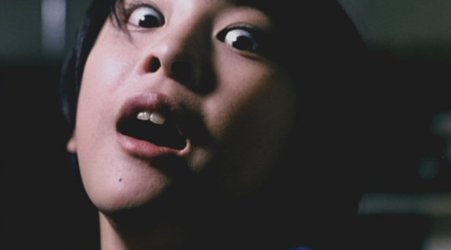
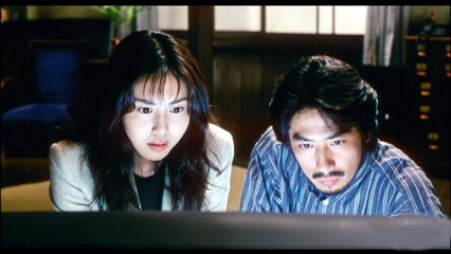
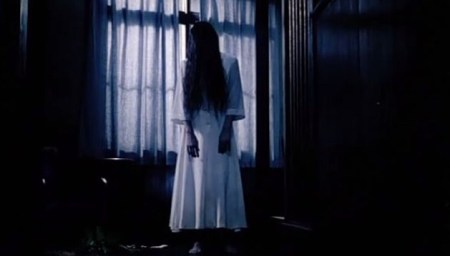
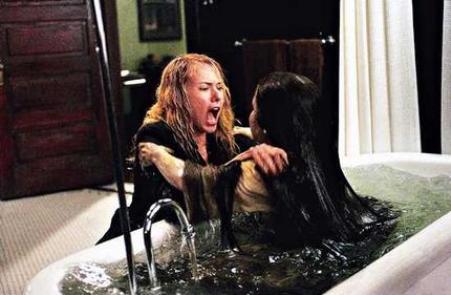
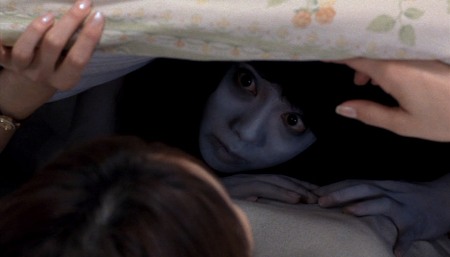


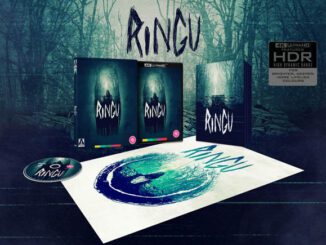
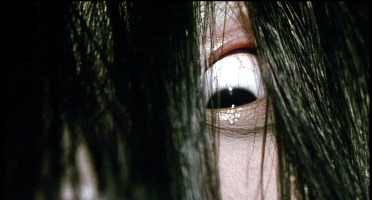
Be the first to comment